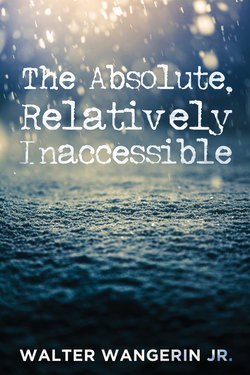Читать книгу The Absolute, Relatively Inaccessible - Walter Wangerin - Страница 5
На сайте Литреса книга снята с продажи.
Adams’ Photograph of Stieglitz
ОглавлениеIn 1939 Ansel Adams photographed the photographer Alfred Stieglitz while the latter stood in an indiscernible corner of his gallery, An American Place.
Your praise is never disintegrating . . . I can see only one thing to do—make photography as clean, as decisive, and as honest as possible.
Adams’ letter to Stieglitz, November 1963
1.
So white
the twice-high ceiling
and white the walls that stand background
to the old man’s figure;
so white the corner-join behind him
it scarcely makes a shadow.
Existence purified, you might say—
except for this one dark thing,
Alfred Stieglitz, whose right hand
hangs slack at his waist,
holding the stem of his eyeglasses
loosely between his fingers.
The old photographer wears a black
double-breasted suit:
a buttoned vest, rumpled pants,
and a white, open-collared shirt.
But his slouch (which discomposes the hang of the jacket)
and his insouciance (one jacket-flap fully in its pocket,
the other, one corner in, one corner out)
belie the suit’s formality.
Alfred’s eyes are as distant as white-noise,
the lip-edge of his moustache
sheared as straight
as a technical principle.
2.
Most folks know Ansel Adams as a photographer
in awe-full communion with the violent moon,
that argent globe fixed in midnight,
indifferent to the wrack of cenotaphs below.
Most ought to know Stieglitz as the first to claim place
for black-and-white photographs
(art, if you please) on the walls of empurpled museums—
MoMA of the muses;
and most ought to know him as a paterfamilias
in communion with young initiates
like this broad-faced Adams fresh from the west,
whose photos Stieglitz displayed on the walls of his “American Place.”
3.
Ansel’s camera, its flash, his shot of Alfred
(the whole pictorial act)
counts two segments
in the unbroken helix
that spirals back
through countless generations of artists—
back to the gloaming wherein God said, Light!
Ansel’s photograph and his mentor
(black against white walls)
is a tribute (craft for craft)
and a legacy (eyes for eyes)
whereby each man defines,
each man revises
the dark and the daylight.
